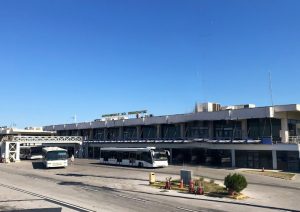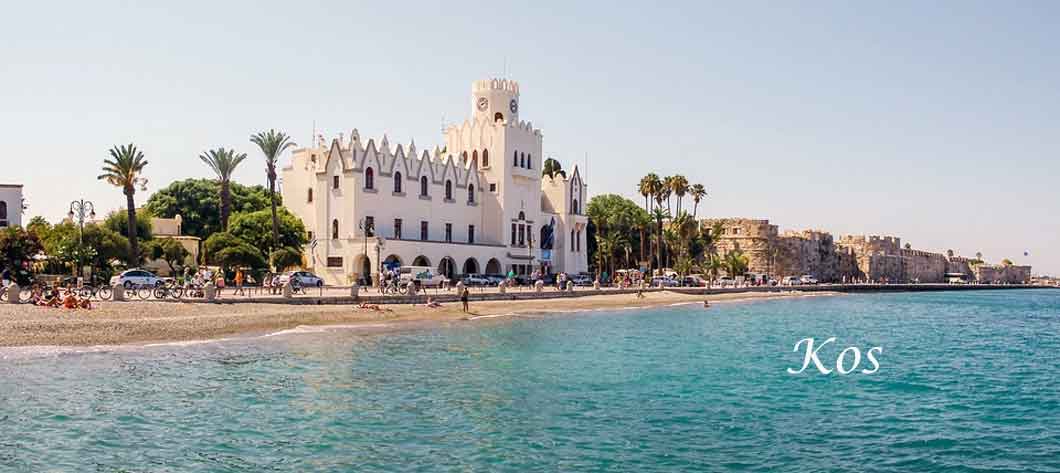Airport of Kos General information
Kos International Airport (KGS) Ippokratis is located in the central-southern part of Kos, 26 kilometres southwest of the capital and near the villages of Antimachia and Kardamena. The airport, which is relatively large, has two terminals and was renovated and expanded in 1997.

In December 2015, the privatisation of Kos Airport, along with 13 other Greek regional airports, was completed with the signing of an agreement between the joint venture of Fraport AG and the state privatisation fund.
The concession has a duration of 40 years, starting from the date of the operational takeover on 11 April 2017, and includes the mainland airports of Thessaloniki, Aktion, and Kavala, as well as the airports on the islands of Crete (Chania), Kefalonia, Corfu, Kos, Mykonos, Mytilene, Rhodes, Samos, Santorini, Skiathos, and Zakynthos.
In the spring of 2021, the new terminal was completed. There are now 28 check-in counters, a modern baggage transport system, and nine security checkpoints. Additionally, a new building for the airport fire brigade was constructed, and the runway was fully renovated.
Facilities and Runway

Additionally, unlike most other Greek airports, Kos Airport does not have a parallel taxiway to the runway. Aircraft taxi to the end of the runway for take-off, then turn 180° on a designated turning pad before taking off. Runway 32 is typically used, as the wind usually blows from the west to north.
Airport Fire Service
Kos Airport has its own fire service, which operates with three to four fire trucks. The fire station is located directly next to the control tower.
Aprons and Parking Positions
There are two aprons at the airport. The larger apron has seven parking positions, capable of accommodating large aircraft, such as the Boeing 747-400 (a Boeing 747-400 landed in Kos in the summer of 2003). The smaller apron is generally used for smaller aircraft that are parked for longer periods or are privately owned.
Public Transport
Once you have landed, you can choose between several options for getting around. You can rely on buses, with KTEL public transport stopping outside Kos Airport and serving the island’s capital and other destinations, take a taxi, or rent a car, which can be conveniently picked up from the rental agencies located at the airport.
By bus
A single public bus service, operated by KTEL, connects the airport with Kos Town and other popular destinations on the island, such as Marmari, Mastihari, Pyli, and Tigaki. The bus stop is about 20 metres from the airport’s arrivals hall exit, and the journey to Kos Town takes around 40 minutes.
By taxi
Taxis are a convenient and affordable option for reaching various locations in Kos and your accommodation, especially if staying in places outside the town. Taxis can be found just outside the terminal.
By car hire
The best way to reach your accommodation from Kos Airport is by renting a car. Public transport only connects Kos Town and the main destinations on the island. Choosing to travel by car will also allow you to visit all of Kos’s beaches, including the most picturesque and secluded ones.
